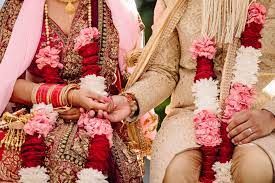
Western weddings tend to follow the same traditions. There’s something old, something new, something borrowed, and something blue; the tossing of the bouquet and garter; and the rice thrown as the newlyweds leave. Around the world, you can find other wedding traditions. Here are just a few of them.
Armenian Lavash Bread Balancing
In traditional Armenian wedding receptions, typically held at the groom’s house, when the groom and bride come in, they smash a dish for good fortune, then the groom’s mother gives them Lavash bread and honey. To stave off evil spirits, they have to balance the lavash bread on their shoulders. They eat honey by the spoonful to bring their marriage happiness.
Congolese Straight Faces
In Congo, smiling at your wedding means you’re not taking your marriage seriously. Couples do everything they can to refrain from smiling to show they’re genuinely devoted to having a long and prosperous marriage.
Czech Baby on Board
In the Czech Republic, before the wedding, a baby will be laid on the couple’s marital bed, blessing and enhancing their fertility. After the wedding, guests will throw lentils, peas, and rice, which also help promote fertility.
Greek Groomsmen — Literally
In Greece, the koumparos — best man — takes his duties very seriously. He becomes the groom’s barber for the day by shaving his friend’s face. After he’s clean-faced, the groom gets to be fed almonds and honey by his future mother-in-law.
Guatemalan Wedding Bells
In Guatemala, the groom’s parents can do anything they care to at the reception they host for the newlyweds — including breaking things. When the happy couple arrives, it’s traditional for the groom’s mother to break a white ceramic bell that’s been filled with grains such as flour and rice to bring the couple prosperity in their married life.
Lebanese Zaffe Pre-Party
Before a Zaffe — wedding ceremony — in Lebanon, friends of the bride and groom will gather outside the couple’s homes for belly dancing, music, and yelling at the bride and groom. Often, professional musicians and dancers may be hired. Everyone convenes at the house of the bride, and the group showers the couple with flower petals and blessings as they head out for the Zaffe.
Mexican Wedding Lazo
At traditional Mexican weddings, the bride and groom are loosely tied together with a lasso of flowers and rosary beads. The lazo is draped over their shoulders in the shape of an eight. It symbolizes the unity of the couple, and it shows how long the couple is hoping their marriage will last.
Nigerian Camel Dance
No, this isn’t a West African variation on the Chicken Dance. At Nigerian wedding receptions that are held in the desert nation, a camel dances to a rhythmic drum beat, surrounded by all the wedding guests.
Norwegian Wedding Crowns
In Norway, brides wear silver and gold crowns on their wedding day. The crowns have charms hanging on them that tinkle when the bride moves around. The sound is meant to ward off evil spirits that may bring harm to the bride or groom.
Russian Karavay
Karavay is a sweetbread served at Russian wedding receptions. It’s decorated with interlocking rings to symbolize unity and wheat to symbolize prosperity. Whichever spouse can take the largest mouthful without using their hands will forevermore be acknowledged as the head of the family.
Welsh Bouquet Myrtle
In Wales, brides include myrtle in their bouquets. After the wedding, they give their bridesmaids cuttings of it, which the bridesmaids plant once they get home. It’s said that the one whose myrtle blooms first will be the next bride of the group.
These wedding traditions may seem strange to those in the Western world, but some Western customs must seem odd to others around the world. Whatever the tradition, the goal is the same: to celebrate the joining of two people for as long as love shall last.
Add Your Comment